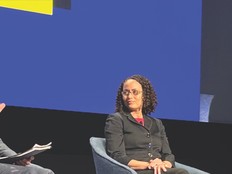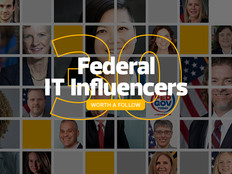You've Got an Enterprise Vision—Here's How to Use Integration Management to Achieve It

I made the case in my last column that integration management is the missing link in the Bush administration's plan to improve results for information technology projects, especially in large agencies. So, how can a mission-focused agency practice integration management?
First, what is integration management? It is a program management discipline focused on coordinating planning and execution across multiple IT projects that are intended to deliver an organization's enterprise vision (EV). More simply stated, it is an enterprise-level project to coordinate the plans, integration points, business processes, data and other elements of multiple, concurrent IT initiatives.
In today's federal environment, we routinely find that agencies have described their enterprise vision. The vision defines a target state in terms of mission priorities, and addresses the required strategies, business processes and supporting mechanisms. The contributions expected from IT are defined in an enterprise architecture (EA), which also defines how an agency will deploy IT to deliver the required support.
To implement the EA, an agency must develop the IT infrastructure and application systems required to deliver the target state. To do this, the agency must plan and execute multiple IT projects simultaneously. This is a complex and difficult challenge, especially given the many interdependencies between projects that exist and that must be coordinated to achieve success.
The challenge increases significantly because the target vision cannot be implemented overnight. Changes are inevitable, and a mechanism must exist to assess the impact of change on all related projects. Without coordination of these interdependencies and their changes over time, an agency could successfully complete each individual project but find that the lack of project integration results in a failure to implement the EA, and as a result, the EV.
The Framework
The integration management framework is a best practice approach for planning, integrating and implementing the IT target-state components of an EV. The framework defines a sequence of coordination points and resulting work products that an agency must address to synchronize its efforts to deliver the target state.
The framework can help an agency identify the integration coordination needed throughout each project's life cycle. The first phase is defining the EV; the last phase is retiring the systems used to implement that vision.
There is a relationship, obviously, between the EV and each initiative's vision. Visions represent projects that the agency must implement to make the EV a reality. To reiterate, the integration management framework defines a single enterprise vision, with multiple initiative visions and related projects supporting it.
Across its life cycle, integration management includes defined workstreams that address key areas of integration.
For example, the business workstream coordinates enterprise-level standardization of business processes for individual initiatives and the EV. The embodiment of the coordination efforts within a workstream is in work products.
Streams and Products
A workstream is the focus of coordination efforts for a specific integration area across the full life cycle. The workstreams promote consistency across multiple projects. A common set of workstreams is in use today for the integration management framework:
• Performance: Defines the key performance improvements expected in the target state and identifies the ways in which each initiative will contribute to those improvements.
• Function: Defines the business processes necessary in the target state, shows how those business processes interconnect across initiatives, and identifies the systems that will support automation of those processes.
• Information: Defines the major types of information important to the enterprise and details which initiatives and systems will provide ownership and stewardship for the data.
• System: Defines the systems needed to achieve the target state and identifies the interconnections and dependencies among those systems.
• Technology: Defines the technology infrastructure required to support the target state and shows how various technology elements support the systems and business functions.
• Organization and communications: Defines the target organizational structure and identifies who will be responsible for specific business processes, information and systems.
• Integration plan: Shows all activities necessary to achieve the target state and identifies schedule dependencies to complement the architectural dependencies defined in the other workstreams.
The agency can easily modify a framework to fit its specific systems development life cycles. If an agency has other areas that it needs to emphasize, it can add additional workstreams to the framework.
A work product is a document that results from coordination efforts within a workstream and captures the results of that coordination. An agency uses the work product content to define relationships among business functions, application and technology initiatives, data, organization and plans. Work products provide the means to document, coordinate and communicate about integration issues and to memorialize decisions. They need to be specifically designed to deliver the intended result of the relevant workstreams.
Governance Role
The integration management framework provides the processes and structure to identify needed coordination, to perform that coordination, and to document and communicate decisions. To do that, an agency requires enterprise governance, which is evident in some form in virtually every federal agency today. The process of enterprise governance describes the key deliverables, review boards and activities required to manage the enterprise vision.
One of the leading practices today is to establish an enterprise program management office that uses the integration management framework and key stage reviews to create a link into the organization's existing governance process. To use this technique, an agency needs stakeholders to review and approve relevant work products before moving to the next phase of the EV life cycle. This ensures that the management office is involved, that key integration points are identified and coordinated, and that key players are a part of the coordination process.
A number of agencies have or are in the process of establishing program management offices with cross-agency authority and oversight. The goal is to ensure that the management of individual IT projects is consistent with the policies and practices directed by the Office of Management and Budget. The current focus of most of these offices is twofold: the application of project and portfolio management disciplines to better align investments with mission strategy, and the implementation of earned-value management systems to improve oversight of project delivery.
But these management offices also need to establish and drive the use of integration management techniques to address the many integration challenges that large government agencies face in coordinating multiple, interdependent projects across organizational boundaries. These challenges require a specific focus to ensure that the content delivered by each project is integrated and truly results in improved performance and service to citizens.
Agencies need to adopt this emerging best practice to fully leverage their IT modernization investments.







